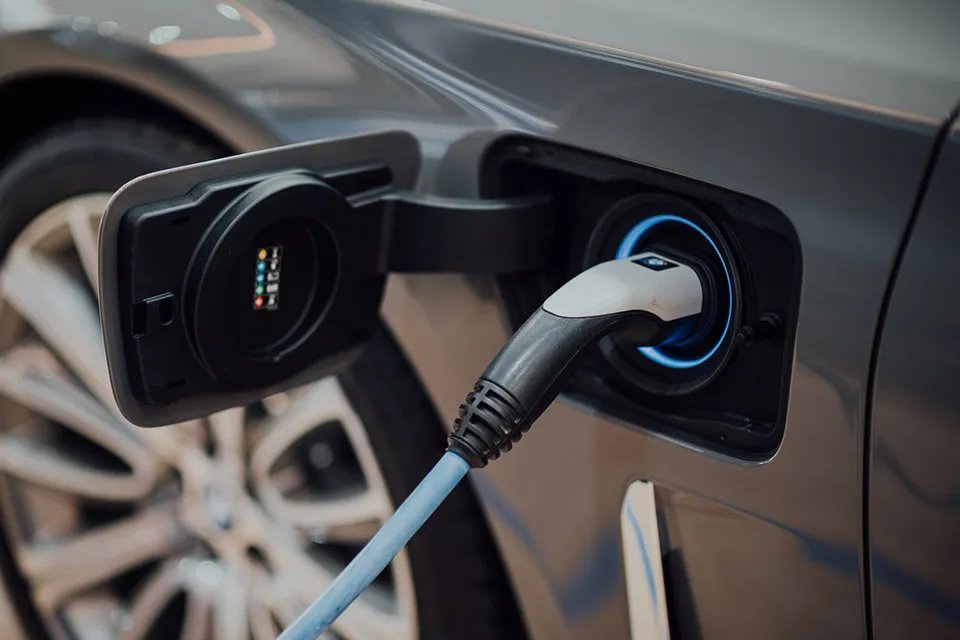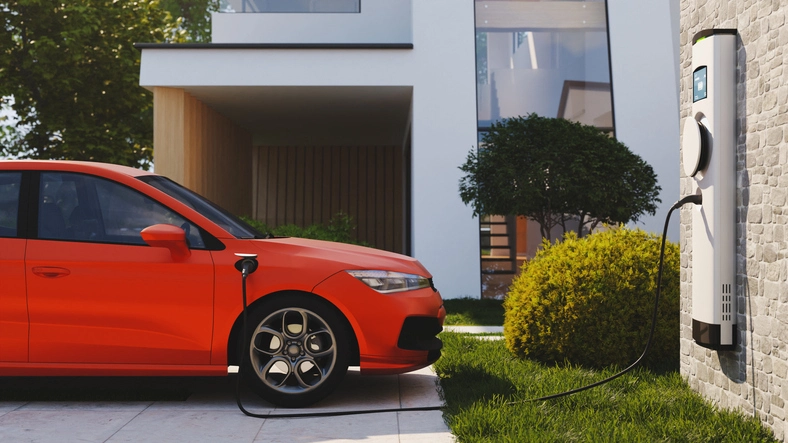Electric Vehicle Charging Guide

The automotive industry is undergoing a significant shift towards electric vehicles and hybrid technologies. The global revolution is a strategic move by every automaker to fully embrace electric technologies or have vehicles in advanced production and prototype stages. The competition between gasoline drivetrains and electric power continues.
Soaring materials costs and associated technologies make building an electric vehicle nearly 40% more expensive than their gasoline counterparts. With current technologies, EV prices will continue to rise, affecting everyone in the automotive industry. Carlos Tavares of the global automotive group Stellantis warns that ICE (internal combustion engine) factories will close if carmakers cannot absorb the higher costs of building electric cars.
Even though a few cracks are countering electric vehicles' rising cost and retail price trends, sales numbers continue to skyrocket across all demographics. Every potential EV customer has one question: How much will it cost to keep my electric vehicle on the road?
Charging Costs for an Electric Vehicle
Driving an electric vehicle means your monthly and daily operating costs will be radically reduced. In addition, the carbon footprint generated by the vehicle is almost eliminated by up to a 70% reduction.
To determine how much out-of-pocket money you will need, look at your current monthly electric utility bill. Find out how many kilowatt hours you use each month and the cost per kWh. A kWh is comparable to running a 1000-watt appliance for 60 minutes.
Estimating Monthly Charging Costs
According to the Electric Vehicle Database, an electric vehicle's energy consumption averages 0.32 kilowatt-hours (kWh) per mile. This means an EV consumes 0.32 kWh of electricity for every mile traveled.
The national average cost of electricity is 15.45 cents per kilowatt. An efficient EV can travel about four miles per kWh. A typical commuter may travel 1000 miles monthly, meaning you will need approximately 250 kWh. The average cost of electricity needed per month will be about $39.00. A drastic reduction from any gas-filled automobile.
Charging Plan
Every prospective buyer of an electric vehicle should have a charging plan in place before making the decision. Commuters with a defined drive each day can benefit from a home charging station or begin the research on public stations along your pre-determined route.
EV buyers who own their homes may have to jump through plenty of hoops to install a home charging station. Buyers using their EVs as work vehicles should consider the home charging option along with public charging stations.
When considering your overall plan, there are three classifications of charging. Consider how much time you will have to fully charge your vehicle and how many miles are needed.
-
Level One Charging: Level One plugs go directly into a household 120-volt outlet coupled with an EVSE or Electric Vehicle Supply System, including the conductors, related equipment, and software. Consider the MEGEAR Skysword as the perfect solution. This is the simplest solution for charging your EV; cables are generally included with all new vehicles.
Charging Time:
Before you declare this is the answer, Level One charging may be the most convenient; however, it is by far the slowest. A less efficient EV can take days to replenish a fully depleted battery, not hours. -
Level Two Charging: Consider the Level Two option to satisfy the need for faster charging. If Level Two is the answer, you may need an electrician; a dedicated circuit breaker with a 220 to 240-volt connection is needed. Level Two is the predominant type of plug-in at most vehicle charging stations. Some charging cords with new vehicles may have swappable heads, or you can purchase a stand-alone Level Two charging kit. If your garage is set up correctly, consider the NEMA 14-50 option, which is the same plug-in type as RV parks.
Charging Time:
Level Two setups may have six to eight times the charging speed than using a 120-volt connection. With a Level Two charge, EV owners can add up to 32 miles of range within an hour. -
Level Three-The Need for Speed: Charging equipment utilizes a different socket at the vehicle end with extra pins to handle the added electricity. There are three configurations of the Level Three charging socket. Level Three is often called DC charging or a Supercharger, and it can fully charge an EV within an hour. Level Three chargers require specific infrastructure to work and cannot be configured for home use.
Charging Time
Charging at Level Three is the fastest option available and can add up to 250 miles of range in less than an hour.
Factors That Influence Charging
Several factors influence the actual delivery of electricity to a specific vehicle. When considering your charging plan before the purchase, look at how, when, and where you will charge your vehicle. Each of the following four factors has a complex interplay of charging dynamics, with each influencing the other and the entire process.
- Battery State influences the charge speed before the vehicle is plugged in. A common misconception is that a 50% battery will charge twice as fast as a depleted battery. The fastest charge happens when the battery is between 20% and 80%. Beyond 80%, the battery slows for protection.
- Battery Health and Capacity are critical factors that affect charging speed and are crucial for efficient travel. The higher the battery capacity, the longer it takes to charge and reach the 80% threshold. A degradation in the battery means a critical reduction in capacity and reduces peak charging.
- The vehicle’s maximum charging time acts as a ceiling on how fast the charging times; this factor, combined with charging station power, influences speed. The inherent limitations on vehicle charging speeds, combined with the charging station, greatly influence both charging times and speed. Home stations invariably have less power than public power stations.
- Weather plays a critical role when charging. In cold weather, charging stations and batteries slow down considerably. When the weather is frigid, charging is at a crawl because chemical reactions within the battery are limited, especially for older batteries.
Where to Charge Your Electric Car
Electric vehicles and charging stations are decades old with the crude technologies of the times. The first electric charger, brought to market in 1902, serviced industrial motors, railways, streetcars, and locomotives. The revolutionary Mercury-Arc Rectifier was installed in garages, businesses, and parking spaces.
Technology has allowed the charging of EVs to advance at breakneck speed. 1996 GE launched the EV1, and the rest is history.
Tesla revolutionized not only the automobile industry but also the public's access to power. Tesla’s rise came at a time when the world was dominated by gasoline and diesel engines. The automaker shifted the narrative of how the world views sustainable transport.
Charging stations are available online, at local stores, and from the automakers building the electric vehicles.
Home Charging Stations

When consumers begin researching the purchase of an electric vehicle, they consider the convenience of a charging station in their garage. Come home Friday after a hard day’s work, plug the precious vehicle into the station, and by the next morning, you are ready to go if it were just that simple!
In North America, every Level 2 electric vehicle uses the same vehicle plug, except for Tesla, which offers an adapter. For convenience, stay on track with the Level Two charging.
The first consideration is where to put the adapter. Some consumers only park outside; however, not all home charging stations are waterproof, and a charger's resistance level varies depending on the weather.
- If you live in an area with frigid weather, heavy rain, or hot temperatures, purchase a station that can withstand the extremes.
- If the station is outside, make sure to have a locking mechanism.
- When shopping for the station, pay attention to the length of the cables, as this feature varies from one product to the next. Know exactly where you plan on parking and measure the distance.
Decide early on where to place the charger on the garage wall. Get a professional electrician to handle this aspect of the installation and also to make sure it is up to code. Let them reinforce the electrical connections to the Level Two station. You can plug the EV into a 120-volt plug; however, if you choose the Level Two station, the electrician must install a 240-volt connection.
Size and appearance are considerations that involve more personal preference than anything else. Never prioritize the appearance over the charging station's key features.
Public Charging Networks and Stations

Information on where charging stations are placed, their power, and how many ports are available can be found on any good search engine. Remember: 1) A level one plug is 120 volts, the same as your home plug; it is the slowest connection and is not recommended. 2) A level two outlet is the most common plug at public charging stations and has the same plug as home garages. Some outlets may have RV plugs of 14-50 and are still considered level two. 3) Level Three is the fastest charging station available, known as DC Fast Charging. Not every public station can access or have available a Level Three charging port.
Before driving to your local Walmart to charge your EV, ensure it is compatible with your EV. This is critical for non-Tesla DCFC stations. Some locations may have a CHAdeMO connector, SAE Combo, or CCS connector.
Depending on how nomadic your family has become, it is wise to ensure that your EV can connect to the Tesla Supercharging Network. Quality charging networks are scattered around the US and growing fast, such as Charge Point and Electrify America. However, the Tesla Network guarantees a fast charging experience.
There are currently over 50,000 locations on the Supercharger Network, and the ports will accept other vehicles and connections. The Tesla Supercharger Network is by far the fastest charge available.
Car Lease Frequently Asked Questions
What are the different types of EV plugs?
Level One and Two charging use the J1772 plug, also known as a J-Plug. The speed demon Level Three uses a DCFC. All EVs can use the CCS Plug or CHAdeMO system, depending on the brand. Tesla uses their own proprietary charging system.
Are there any charging stations in my area?
Likely, No, the charging station infrastructure is new but growing fast. Due to the Bipartisan Infrastructure Law and its $7.5 billion will help.
How many charging stations are in the United States?
According to the Department of Energy, there are currently 50,000 stations around the states with nearly 130,000 individual ports.
What vehicles can access the Tesla Supercharger network?
Three types of Superchargers exist. 1) a connection for only Tesla vehicles. 2) All EV Superchargers with a Magic Dock Adapter. 3) NACS Superchargers, which are in development.
Are electric vehicles worth the money?
The numbers are just starting to be documented, and owners are saving thousands of dollars over a car's lifetime—not to mention eliminating toxic-spewing ICE vehicles.
FREE Vehicle Search
- Accidents
- Problem Checks
- Title Records
- Recalls
- Values
- Specs
-
InfoPay, Inc. (dba GoodCar) is an Approved NMVTIS Data Provider
-
-























